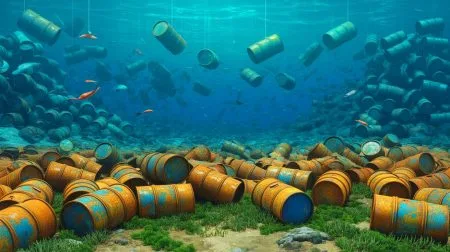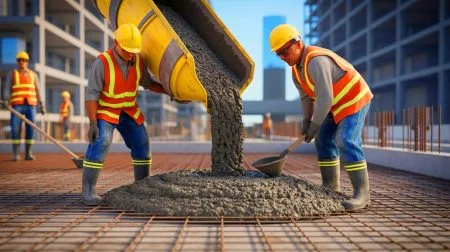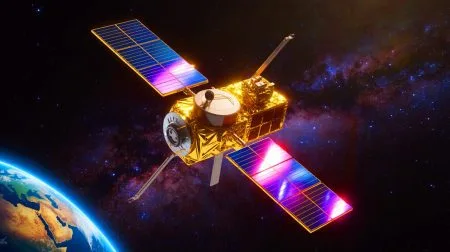Even as several European countries are transitioning to low-carbon energy sources, they’re turning their backs on nuclear power – despite nuclear being widely seen by experts as a reliable form of low-carbon energy. The reasons for this aversion? Fears about costs and nuclear safety. The two are intricately linked, since the costs of new reactors and plants often balloon because of exacting safety regulations. While coherent and rigorous regulatory frameworks do need to be in place to ensure safety, overly particularized red tape is often hampering nuclear energy’s viability.
Globally, nuclear power has the safest track record of any power source; it’s also one of the most efficient. Yet this good performance history notwithstanding, “regulatory burdens on nuclear plants are making them expensive,” stresses the Institute for Energy Research (IER), a think tank that analyzes energy markets. This is particularly the case in the West. For example, “The American Action Forum (AAF) found the average nuclear plant bears an annual regulatory burden of around $60 million — $8.6 million in regulatory costs, $22 million in fees to the Nuclear Regulatory Commission (NRC), and $32.7 million for regulatory liabilities.”
Such financial burdens mean that nuclear plants – in the US, Europe or elsewhere – are often unable to compete with other forms of energy, like coal, natural gas or heavily subsidized solar, despite inflicting far less harm on the environment. Consequently, the IER identifies regulatory costs as “clearly contributing to the premature retirement of nuclear plants” while discouraging new build.
These costs are symptomatic of uncertainty: for instance, when regulators introduce new requirements while a plant is already under construction, thereby shifting the regulatory goal posts and causing cost overruns. It is not surprising then that Western countries are slowly moving away from nuclear. Of 51 reactors currently under construction, only three are in Western and Central Europe (UK, France and Finland), seven are in Eastern Europe (Belarus, Slovakia and Russia) and two are in the US.
As such, overregulation in the sector is not only counterproductive – but often counterintuitive. This is repeatedly stressed by advocates of nuclear energy who hope to see it more widely deployed to reduce CO2 emissions and fight climate change. “The most dangerous nuclear reactor is the one that isn’t built because a fossil plant is likely to be built instead, which comes at the cost of increased air pollution and the onward march of climate change,” Eric G. Meyer, founder and director of the nuclear advocacy nonprofit Generation Atomic, tells Sustainability Times.

“Nuclear plants take extraordinary efforts to keep radiation levels ‘as low as reasonably achievable.’ Meanwhile, coal plants are allowed to put hundreds of times more radiation into the environment because they successfully lobbied the Environmental Protection Agency to classify their radioactive emissions as NORM, or ‘naturally occurring radioactive material,’” Meyer explains.
“Is there a difference? No. Should we be scared of the radiation from nuclear plants? No. It’s not really enough to hurt anything, but we should definitely be concerned about the other fossil particulates that cause asthma, heart conditions, and cancer,” Meyer warns. “Globally, these particulate emissions from fossil plants kill about 10,000 people a day, far more than has ever been harmed by nuclear energy.”
A reason for this discrepancy is that the dangers associated with nuclear have been widely exaggerated for years, which has compelled regulators all over the world to introduce safety requirements due to growing public pressure. Consequently, nuclear builders and operators are required to abide by certain redundant regulations.
In Germany, NPPs need to be built so as to resist direct impact of a plane crash, be it through an accident or terrorist attack, after a pressure group in 2013 argued no German NPPs were prepared for such a contingency. Although the standard reactor containments have been shown to resist direct impact of a plane, the exploration of measures to fortify the plants or deter terrorist attacks, and subsequent tests and inspections have added millions to operators’ expenses – all the while such an event is regarded as extremely difficult to pull off and therefore considered highly unlikely.
Other regulations pertain to safety in waste disposal. For example, “Regulations on permanent waste repositories force [nuclear plants] to prove that the highest dose the public could ever receive from the waste is .015 millisievert per year,” Rod Adams, head of Atomic Insights, tells Sustainability Times, citing one regulation that he sees as unwarranted. “The background radiation in most places in the world is between 1.5 to 3.5 millisievert. This leads to all kinds of crazy overbuild like titanium drop shields and more. It’s a lucrative business for the people designing and building these things but doesn’t help anyone else.”
Of course, nuclear technology should be rigorously regulated, pro-nuclear experts stress. But regulations should be streamlined so as not to place unreasonable burdens on constructors and operators. “The speed at which regulatory agencies work can be a large impediment to the development and deployment of nuclear energy. … it takes many years, sometimes over a decade, for the NRC to license a new reactor,” says Nicholas Thompson, a nuclear scientist who works at Los Alamos National Laboratory in New Mexico and the Institut de Radioprotection et de Sûreté Nucléaire in Paris, France.
“However, nuclear energy is a technology which should be strictly regulated and inspected to ensure safety,” Thompson emphasizes. “With the Boeing 737 Max, we are currently witnessing the results of a failure to regulate and inspect complex technologies,” he adds, referring to new passenger aircraft in which onboard software glitches are linked to deadly crashes in Indonesia and Ethiopia.
While Boeing may be an example of under-regulation and lacking enforcement, what the experts make clear is that in order to achieve the highest standards of nuclear safety, not every single requirement is necessary. Regulators should instead seek to eliminate those that are far from useful and that only add costs without leading to safety gains.
Did you like it? 4.5/5 (25)






